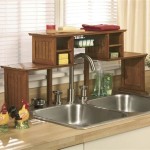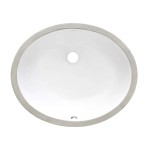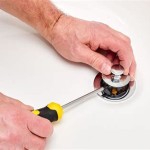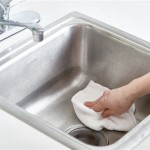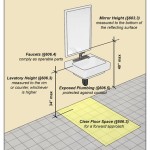Replacing Bathroom Sink and Countertop
Replacing a bathroom sink and countertop can dramatically improve the aesthetic and functionality of a space. Whether driven by wear and tear, a desire for updated style, or increased practicality, this project offers a significant return on investment in terms of both home value and personal satisfaction. While seemingly complex, careful planning and execution can make this a manageable DIY project for experienced homeowners or a straightforward task for a professional contractor.
The first step in any bathroom renovation involves thorough planning. Begin by determining the desired style and size of the new sink and countertop. Options range from pedestal sinks to undermount sinks paired with vanity cabinets. Consider the existing plumbing and the overall bathroom layout when making these decisions. Precise measurements are crucial to ensuring a proper fit. Measure the existing countertop length, width, and depth, as well as the size and placement of the current sink. These measurements will guide the selection process and ensure compatibility with existing plumbing fixtures.
Choosing the right materials is essential for both aesthetics and durability. Popular countertop materials include granite, quartz, marble, and laminate, each offering varying degrees of resistance to scratches, stains, and heat. Sink materials commonly include porcelain, ceramic, stainless steel, and composite materials. Evaluate the pros and cons of each material considering budget, maintenance requirements, and design preferences. Remember to coordinate the sink and countertop materials for a cohesive look.
Once materials and measurements are finalized, gather the necessary tools and equipment. Commonly required tools include a wrench set, putty knife, caulk gun, level, measuring tape, safety glasses, and gloves. Depending on the existing countertop material, additional tools like a reciprocating saw or hammer and chisel might be required for removal. Having all necessary tools readily available streamlines the process and prevents unnecessary delays.
Before starting the demolition process, turn off the water supply to the sink. This crucial step prevents accidental flooding during the removal process. Place a bucket under the sink's P-trap to catch any remaining water. Disconnect the water supply lines and the drainpipe. If the existing countertop is attached to the vanity cabinet, carefully remove the screws or fasteners securing it. Depending on the countertop material and installation method, this step may require additional tools and techniques.
With the old countertop removed, it's time to prepare the vanity for the new installation. Inspect the vanity for any damage and make any necessary repairs. Ensure the surface is clean and level. If installing a new vanity, carefully follow the manufacturer's instructions for assembly and installation.
Test-fitting the new countertop and sink is highly recommended before applying any adhesive or sealant. Place the countertop on the vanity, ensuring it fits snugly and aligns correctly. Position the sink within the countertop cutout, verifying proper alignment and clearance for plumbing connections. This dry run allows for adjustments and ensures a smooth final installation.
Applying a bead of silicone caulk around the perimeter of the sink cutout creates a watertight seal and prevents leaks. Carefully lower the sink into the cutout, pressing firmly to create a strong bond. Secure the sink to the countertop using the manufacturer’s recommended clips or fasteners, ensuring it is level and stable.
After the sink is securely in place, connect the drain assembly and the water supply lines. Thoroughly check all connections for leaks. Turn the water supply back on and observe for any drips or leaks around the drain and supply lines. Address any leaks promptly to avoid water damage.
The final step involves applying a bead of caulk around the edges of the countertop where it meets the wall. This creates a finished look and prevents water from seeping behind the countertop. Smooth the caulk with a wet finger for a professional finish. Allow the caulk to dry completely before using the sink.
Proper maintenance is crucial to preserving the longevity and appearance of the new sink and countertop. Regularly clean the surfaces with appropriate cleaning agents recommended for the chosen materials. Avoid using abrasive cleaners or harsh chemicals that can damage the finish. Promptly address any leaks or chips to prevent further damage and maintain the functionality and beauty of the newly renovated bathroom.

How To Remove Replace A Vanity Top Easy Bathroom Sink Remodel Youtube

How To Replace A Bathroom Countertop Homeadvisor

Replace Vanity Top And Faucet Diy Network Youtube

How To Install A Bathroom Vanity Youtube
How To Get Replacement Countertops For Your Bathroom Vanity Trubuild Construction

How To Replace A Vanity Top And Save Craving Some Creativity

2024 Cost To Replace Bathroom Countertop A Guide

Replace Granite Countertops Transform Your Bathroom S Look

How To Remove A Countertop From Vanity Decor Adventures

How To Install A Bathroom Vanity And Sink
